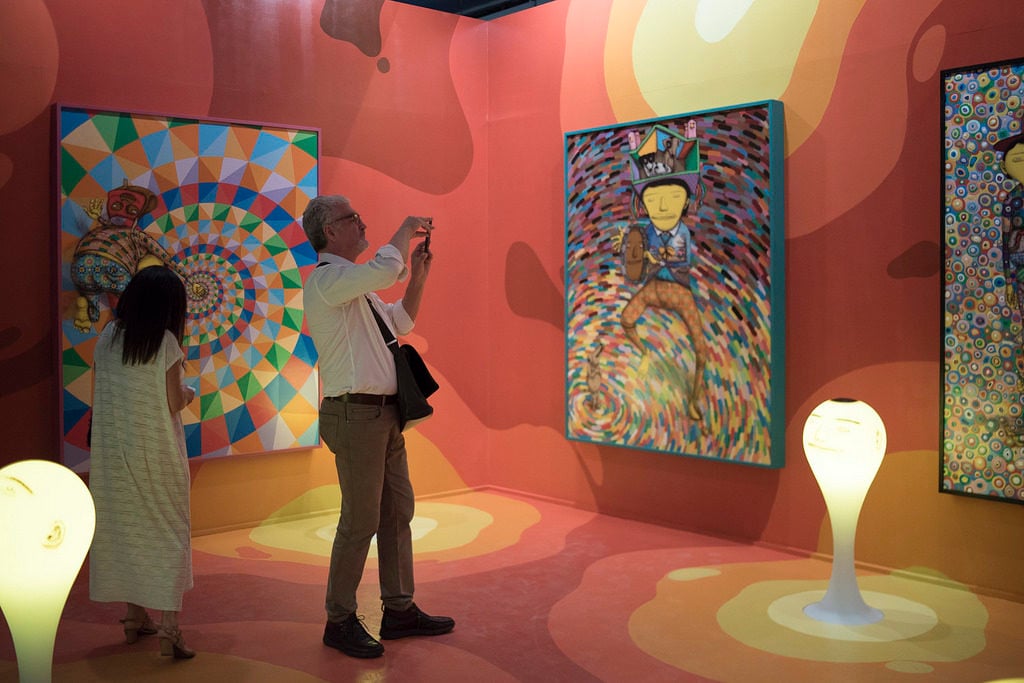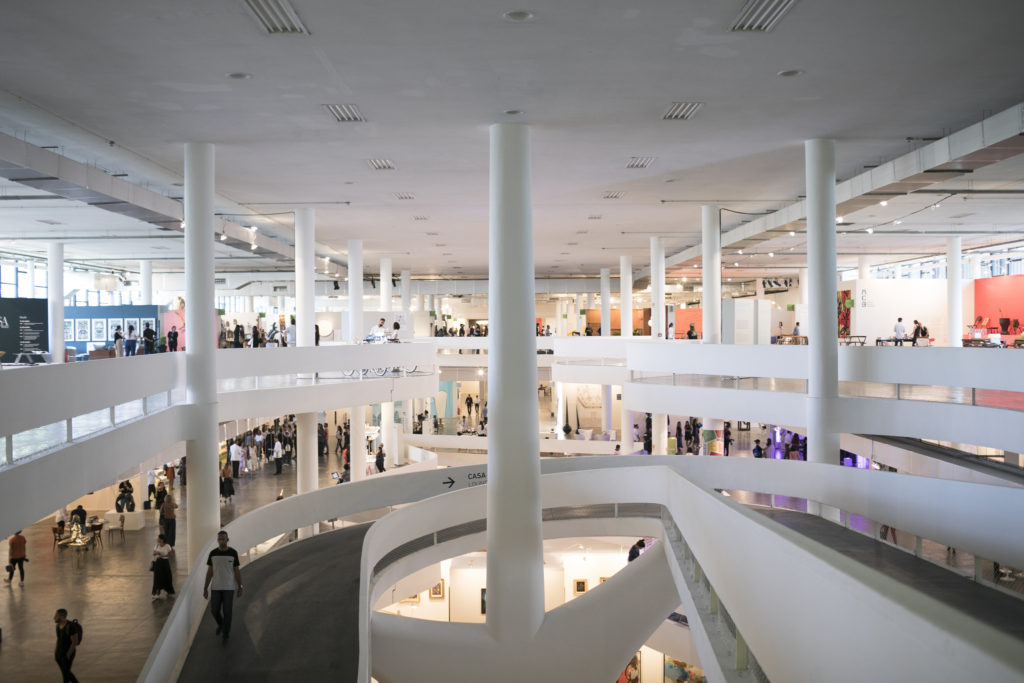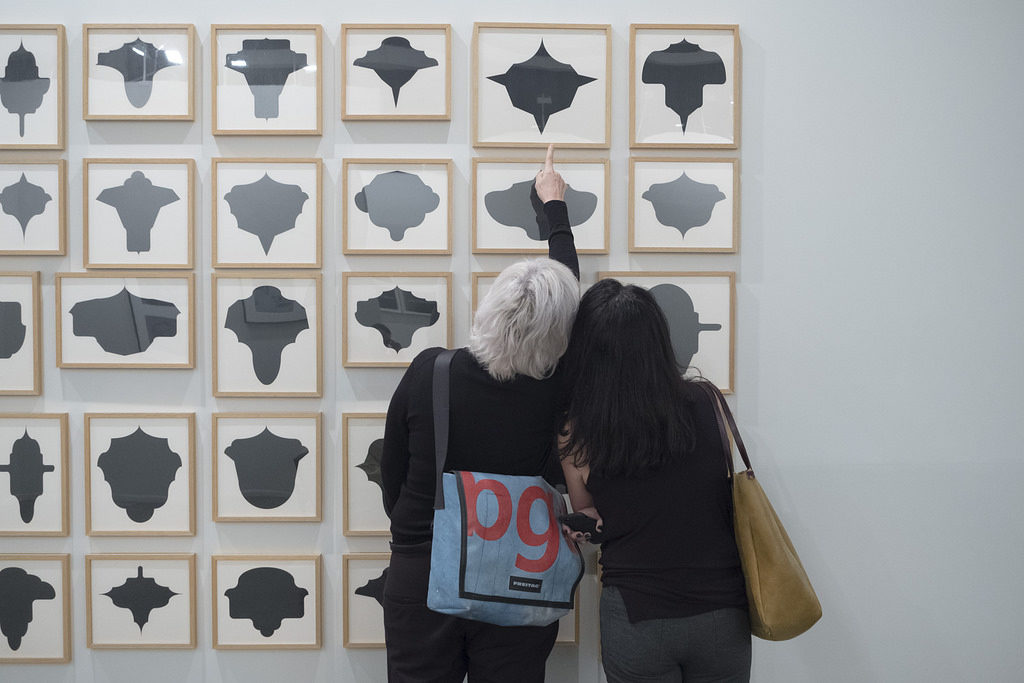Art Fairs
‘The Scene Is Doing Terribly But the Market Is Doing Great’: Galleries Report Solid Sales at SP-Arte Amid Political Unrest
Brazil's premier art fair seemed to be taking place a world away.

Brazil's premier art fair seemed to be taking place a world away.

Henri Neuendorf

Brazil is experiencing a wave of political unrest—but you wouldn’t know it from browsing the aisles at SP-Arte, the premier event on Brazil’s art calendar, where dealers and collectors were doing brisk business this weekend. The 97 domestic dealers, 34 international galleries, and 33 design dealers who set up shop inside São Paulo’s Oscar Niemeyer-designed biennial pavilion seemed unfazed by the current upheaval outside their doors.
The brisk sales at the fair, which closed to the public yesterday, illustrate the paradoxical situation that currently defines the arts in Brazil: The market is doing well at the same time that the art scene itself continues to be threatened by a concerning political shift toward the right, which has stifled creativity and freedom of expression.
The market has benefited from the fact that the government recently lowered interest rates, encouraging domestic collectors to diversify their investment portfolios through a variety of assets—including art—in order to prevent money from languishing in their bank accounts.
“The scene is doing terribly,” explained Brazilian dealer Pedro Mendes of gallery Mendes Wood DM, “but the market is doing great. People are investing in the economy and buying art is a good way to do that.” The São Paulo gallery sold out its recently opened show of work by Paulo Nimer Pjota and Runo Lagomarsino and reported a flurry of sales at the fair, including a wall piece by Sonia Gomes, five floor sculptures by Paulo Nazareth, a Kishio Suga sculpture, a Daniel Steegmann curtain, and paintings by Patricia Leite and Lucas Arruda.
Indeed, Brazilian galleries were largely upbeat about their fortunes. The São Paulo, Rio de Janeiro, and New York-based Galeria Nara Roesler gallery sold sculptures by Vik Muniz and Brígida Baltar, wall pieces by Eduardo Navarro and Sérgio Sister, and paintings by Carlito Carvalhosa and Antonio Dias.
São Paulo’s Luciana Brito Galeria reported the sale of a 60-piece work on paper by American artist Allan McCollum, a work by Argentinian artist Liliana Porter, 10 small gold sculptures by Mexican artist Bosco Sodi, and a historical drawing by Augusto de Campos, the Brazilian founder of the Concrete poetry movement.

The Oscar Niemeyer-designed Biennial Pavilion. Photo: Jéssica Mangaba for SP-Arte/2018.
Local gallery Millan, meanwhile, sold two works by Brazilian artist Tunga for $140,000 each, a painting by geometric abstract painter Paulo Pasta for $40,000, and a variety of works by young artists for a combined total of $100,000.
Representatives from local and international institutions were also in attendance—and ready to buy. Luisa Strina, the grande dame of the Brazilian gallery scene, sold a sculpture by the Brazilian conceptual artist Cildo Meireles to Madrid’s Reina Sofia Museum, a video work to the Pinacoteca de São Paulo, and a sculpture by mid-career Brazilian artist Renata Lucas to New York’s Dia Foundation.
Every international dealer interviewed insisted they were unconcerned by recent political events. “Brazil’s political situation is consistently inconsistent,” New York dealer Alexander Gray told artnet News, adding that he hadn’t noticed a slowdown as a result. “We haven’t felt it one way or the other—it’s a complex place to do business and always has been.” (He declined to divulge specific sales.)
Peter Bentley Brandt of London’s White Cube felt similarly. He noted that the gallery cemented relationships in São Paulo during its three-year stint with a space in the city between 2012 and 2015. “We’ve been doing the fair since 2012—we do it every year,” he said. “Our artists love to be shown in Brazil.” The gallery reported sales by Antony Gormley, Georg Baselitz, Damien Hirst, Doris Salcedo, and Tracey Emin.

A work by Allan McCollum at Luciana Brito’s stand. Photo: Leo Eloy for SP-Arte/2018.
Although international dealers agreed that the uncertainty didn’t discourage them from attending, there were noticeable absences at this year’s fair. Reputable international dealers Thaddaeus Ropac and Cheim & Reid, which both participated last year, chose not to return. (Neither gallery could be reached for comment on their decision.)
Based on the quantity of sales reported at the fair, it seems like brisk business as usual. But as is often the case in Brazil, things are not always as they appear. SP-Arte negotiated a deal with the government to lower the exorbitant 50 to 60 percent state sales tax on artworks to between 15 and 16 percent for the five-day duration of the event (plus two extra days to close deals).
Dealers admit that sales are frequently agreed on beforehand and finalized when the fair opens to take advantage of the temporary tax amnesty. Consequently, it is possible that some works may have been sold weeks, or even months, before the political unrest reached its apex. This may create a deceptive picture of the current market, and the true effect the political situation has had on buyer behavior.
On the fair floor, however, the mood seemed upbeat and jovial. Enthusiastic crowds of well-dressed visitors browsed the booths, many with families in tow. Alexandre Gabriel, a partner at Fortes D’Aloia & Gabriel, said that for many wealthy Brazilians, the event is a welcome distraction from the turmoil. “It helps people step back from politics and concentrate on art,” he said. Or, perhaps, as the artist Vik Muniz said, “If you have money to buy art, maybe you’re just immune to a lot of these fluctuations.”